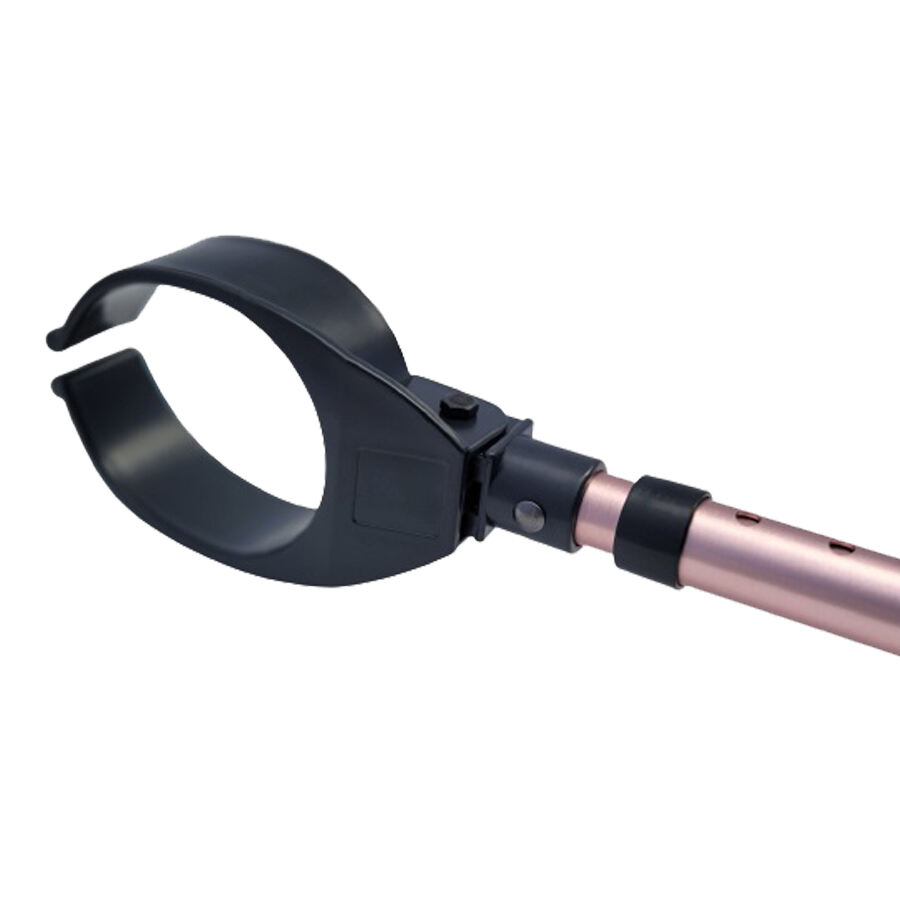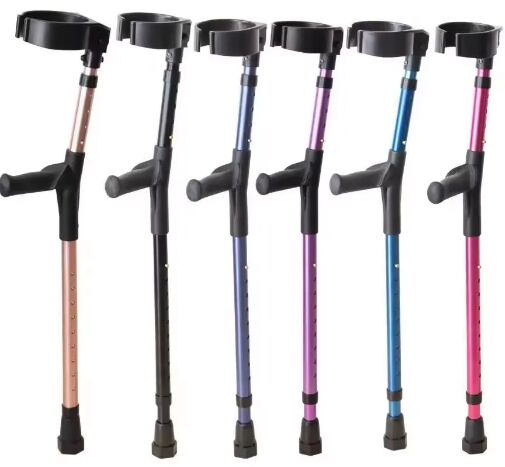Understanding Mobility Support Options for Seniors
When it comes to maintaining independence and mobility in the golden years, choosing the right walking aid becomes crucial. Elbow crutches have emerged as a popular mobility solution, offering a blend of support and maneuverability that many seniors find appealing. These assistive devices, also known as forearm crutches, feature specialized cuffs that wrap around the forearm, providing additional stability compared to traditional underarm crutches.
The aging population increasingly seeks mobility solutions that balance safety with independence. Elbow crutches represent a significant advancement in mobility aid design, incorporating ergonomic features that cater to various user needs. As we explore the suitability of elbow crutches for elderly users, we'll examine multiple aspects that influence their effectiveness and safety.

Design Features and Benefits of Modern Elbow Crutches
Ergonomic Components and Structure
Modern elbow crutches incorporate sophisticated design elements that enhance user comfort and security. The forearm cuff is carefully contoured to distribute pressure evenly across the arm, while the handgrip is positioned to maintain natural wrist alignment. These ergonomic considerations help prevent strain and fatigue during extended use.
The adjustable height mechanism allows for precise customization to match the user's body dimensions. This adaptability ensures proper posture and reduces the risk of muscle strain or joint stress. Additionally, premium elbow crutches often feature shock-absorbing components that minimize impact during walking.
Material Innovation and Durability
Contemporary elbow crutches utilize advanced materials like aircraft-grade aluminum and carbon fiber composites. These materials offer exceptional strength while maintaining lightweight properties, making the crutches easier to maneuver. The durability of these materials ensures long-term reliability, particularly important for daily use by elderly individuals.
Anti-slip rubber tips and reinforced joints contribute to the overall stability of elbow crutches. These features become especially valuable when navigating various surface types, from indoor flooring to outdoor terrain. The combination of robust materials and thoughtful design creates a dependable mobility aid suited for long-term use.
Support and Stability Considerations for Elderly Users
Weight Distribution and Balance
Elbow crutches excel in providing balanced weight distribution across the upper body. The forearm cuff design allows users to engage their arm muscles more effectively, resulting in better control and stability. This distribution pattern helps reduce fatigue and increases confidence during movement.
For elderly users, the ability to maintain proper balance is crucial. Elbow crutches offer a wider base of support compared to single-point canes, while remaining more maneuverable than walkers. This balance of stability and mobility makes them particularly suitable for active seniors who require reliable support.
Physical Requirements and Adaptability
Using elbow crutches effectively does require a certain level of upper body strength and coordination. Elderly users must have sufficient arm strength and grip capability to properly control the crutches. Regular physical therapy and strengthening exercises can help develop and maintain these necessary abilities.
The adaptability of elbow crutches allows for gradual adjustment as users build confidence and strength. Healthcare professionals can work with seniors to establish proper technique and gradually increase activity levels. This progressive approach helps ensure safe and effective use of the mobility aids.
Safety Features and Risk Management
Built-in Safety Mechanisms
Modern elbow crutches incorporate multiple safety features designed specifically for elderly users. Quick-release mechanisms allow for swift cuff removal in case of emergency, while reflective elements enhance visibility in low-light conditions. The ergonomic grip patterns reduce the likelihood of slipping, even with reduced hand strength.
Additional safety features include dual-density rubber tips that provide enhanced traction on various surfaces. Some models offer foldable designs for convenient storage without compromising structural integrity. These thoughtful additions contribute to the overall safety profile of elbow crutches.
Fall Prevention and Recovery
The design of elbow crutches actively contributes to fall prevention through improved stability and control. The forearm cuff provides an extra point of contact that helps users maintain balance, even if momentarily losing grip on the handles. This added security is particularly valuable for elderly individuals with balance concerns.
In the event of a stumble, the crutch design allows for quick weight shift and recovery. The stable base and ergonomic grip enable users to quickly regain their balance. Regular practice with proper techniques helps build muscle memory for these recovery movements.
Long-term Usage and Maintenance
Durability and Wear Patterns
Quality elbow crutches are designed for extended daily use, with components tested for thousands of cycles. Regular inspection of wear points, particularly the rubber tips and cuff padding, helps ensure continued safe operation. Most parts are replaceable, extending the useful life of the mobility aids.
Proper maintenance includes checking adjustable components for secure locking, cleaning contact surfaces, and monitoring for signs of material fatigue. These routine checks help prevent unexpected equipment failures and maintain optimal performance.
Adaptation and Progressive Support
As elderly users become more experienced with elbow crutches, their confidence and capability typically improve. The adjustable nature of these mobility aids allows for modifications to match changing needs and abilities. Regular assessment by healthcare professionals can help optimize the support level and usage patterns.
Long-term users often develop personalized techniques that maximize comfort and efficiency. The versatility of elbow crutches accommodates these adaptations while maintaining essential support and safety features.
Frequently Asked Questions
How long does it take to adjust to using elbow crutches?
Most elderly users require about two to three weeks to become comfortable with elbow crutches. This adjustment period includes learning proper technique, building necessary strength, and developing confidence in different environments. Working with a physical therapist can significantly speed up this adaptation process.
Can elbow crutches be used on all surfaces?
Elbow crutches are designed for use on most common surfaces, including hardwood floors, carpet, and outdoor pavements. The rubber tips provide good traction on various materials, though extra caution should be exercised on wet or uneven surfaces. Some models offer specialized tips for different terrain types.
What maintenance do elbow crutches require?
Regular maintenance includes checking and replacing rubber tips when worn, cleaning all contact surfaces, inspecting adjustment mechanisms, and ensuring all fasteners remain tight. It's recommended to perform a basic inspection weekly and a more thorough check monthly, with immediate attention to any unusual noises or movement.
How do I know if elbow crutches are right for me?
The suitability of elbow crutches depends on factors including upper body strength, balance ability, and specific mobility needs. A healthcare professional can assess these factors and recommend appropriate mobility aids. They will consider your activity level, living environment, and physical capabilities when making recommendations.

 EN
EN









































